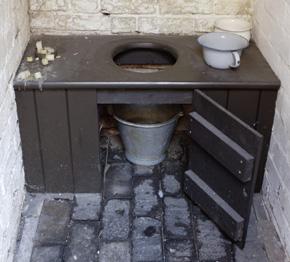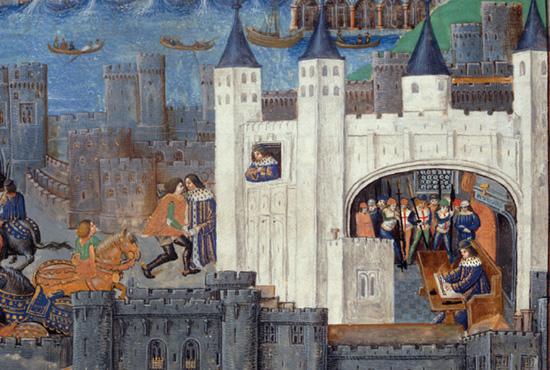If Walls Could Talk: An Intimate History of the Home (47 page)
Read If Walls Could Talk: An Intimate History of the Home Online
Authors: Lucy Worsley
Tags: #History, #Europe


13. A public bath-house. These places of pleasure were immensely popular in medieval cities. Used by both sexes simultaneously, they developed rather a dubious reputation. By the eighteenth century, a ‘bagnio’ was basically a brothel.

14. Queen Caroline, interested in medical innovations, pioneered the habit of bathing when it returned to fashion in the 1700s after centuries of being considered dangerous. This is her bathroom at Hampton Court Palace.

15. The fishing pavilion at Kedleston Hall, Derbyshire (top left). Its lower storey houses a plunge pool for a cold dip, intended to cure ‘weakness of Erection, and a general disorder of the whole Codpiece Economy’.

16. A lady’s maid from the 1730s soaping her mistress’s linen (top right). The laundry-maids were the servants least supervised in any household, and the most fun.

17. 18, Folgate Street, Spitalfields, London. Built in the 1720s, townhouses like this would dominate the next two centuries. Their bedrooms were starting to become private places.

18. An earth closet, an enduring form of toilet. Without the need for water or plumbing, they were always the poor person’s choice, and are returning to favour once again in the form of today’s sustainable composting toilets.

19. In most workers’ homes, the kitchen was the bathroom, and the whole family took turns to use the same tub. It was easier ‘to throw the baby out with the bathwater’ than you might think. Families bathed eldest to youngest, and the water grew dirty and dark towards the end.

20. Pregnant women were advised to avoid the shower bath, as it ‘gives too great a shock, and may induce miscarriage’. Charles Dickens possessed a model aptly named ‘The Demon’.

21. Charles, duc d’Orleans, as a prisoner in the Tower of London. He occupies a grand medieval living room, with tiled floor, hangings on the walls, his attendants all standing while the duke is seated.

22. A later living room, but still with very little furniture, and that very portable. Queen Elizabeth I is receiving ambassadors. Her chair has arms and is placed under a canopy as a mark of her royalty.

23. The Long Gallery at Hardwick Hall. Its use was three-fold: for displaying portraits of relatives, for exercise and for private conversation. Eavesdroppers could not creep up unobserved in such a big room.
